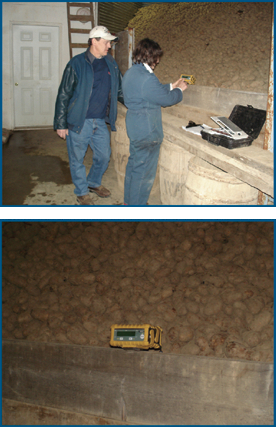

| Topic: CO2 Exposure in Potato Barns | |
| Date Issued: October 16, 2009 | Date Revised: |
Fortunately, a worker exposed to high levels of carbon dioxide (CO2) in a potato building suffered no permanent injuries.
Fresh potatoes naturally produce carbon dioxide, which extends the commercial life of potatoes. On average, potatoes produce 5 mg/hour of CO2 gas. This level is safe when the potatoes are stored in an adequately ventilated building, but quickly becomes dangerous when the ventilation systems are not working. New, airtight storage facilities pose an even greater risk because they have no exposure to air. Depending on the size of the potato building and the amount of potatoes, the environment can become immediately dangerous and even deadly within a day.

October 2009